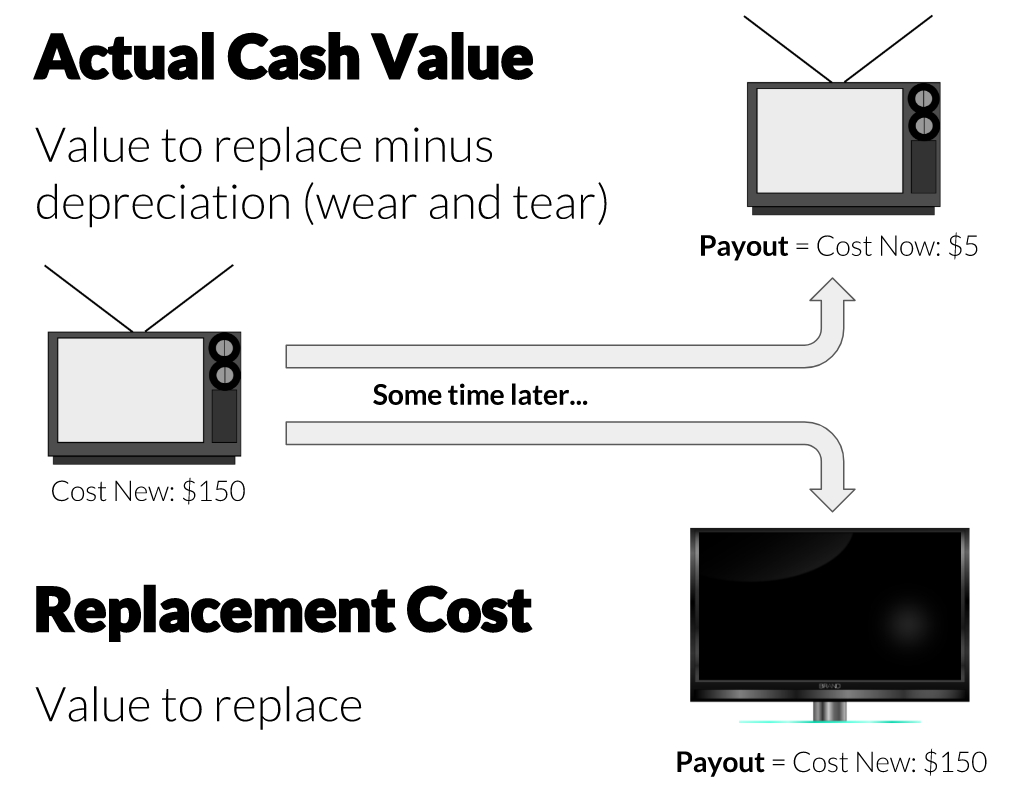
Decoding Dwelling Coverage: A Homeowners Insurance Guide
TABLE OF CONTENTS
Buying homeowners or condo insurance may seem like a simple process, but it can be filled with hidden pitfalls and confusing details. In this guide, we reveal the tricks of the trade and provide expert tips on how to choose the right insurer, navigate the policy process, and handle claims with ease. Don't be caught off guard by unexpected exclusions or inadequate coverage - arm yourself with the knowledge you need to make informed decisions about your dwelling coverage.
KEY TAKEAWAYS
- 1
When choosing a homeowners insurer, prioritize companies with positive marks for claims processing.
- 2
Dollar deductibles may be better than percentage-based options based on price, dwelling value, and financial capacity.
- 3
Beware of exclusions that may exclude you from coverage or a claim, including ineligible risks and policy exclusions.
- 4
Pay attention to exclusions and endorsements in your policy, as they can majorly impact what is covered and what is not.
- 5
Be proactive in protecting your home and reducing risk, such as by maintaining the condition of your house and installing safety features.
Which homeowner insurance carrier to choose
You obviously want the company that fits your budget best and offers at least the protection that most home insurance policies provide coverage for. Yes, price comparison versus typical homeowners' rates is important, but there are other important things to consider as well.
1. Prioritize companies with positive marks for claims processing.
The most important interaction you’ll ever have with an insurer is if you have to make a claim with them. Unfortunately, it may be months or years of paying them before this situation arises. Finding out that their claims service is terrible after paying hundreds or thousands of dollars is supremely frustrating. Not to mention, a financial punch in the gut.
To research insurance information about companies with good claims processing scores, you can use our unparalleled list of insurer profiles, or go view them at individual third-party rating companies such as JD Power.
2. Be smart about choosing deductibles
Most policies will have deductibles ranging from $500 to $2500. However, they can also have a percentage value based on the total amount of dwelling coverage. These generally range between 2% and 10%. These percentage deductibles are most often found for coverages relating to nasty weather such as hurricanes, hail, and other major wind events.
The problem with percentage-based deductibles is that if you have a home insured for $315,100 (national median home price) with a 5% to 10% deductible, you’ll have to pay $15,755 to $31,510 before insurance kicks in. As a result, it may be better to choose a flat dollar amount for your deductible over a percentage-based option, but it depends on a number of factors such as the overall price difference between those options, the value of your dwelling, and how much financial burden you can comfortably bear. At the very least, it’s worth doing the math to figure out what the dollar amount would be for the deductible and/or ask your agent or insurer about it.
3. Be aware of risks or exclusions that may disqualify you from coverage or a claim.
When it comes to your insurance, there are numerous things your insurer won’t cover. These exclusions fall into two categories called ineligible risks and policy exclusions. For ineligible risks, each insurer has different levels of risk they’re willing to take on—what’s called their “appetite” for risk. These cover wide-ranging things such as dog breeds, distance to coast, type of roof or its age, wood-burning stoves, or even whether you have junk in your yard (see table below for examples).
Generally, these are things you don’t need to worry much about since if your agent or the insurer sees that you have any of these ineligible risks, they won’t sell you a policy in the first place. However, it’s possible that some of these risks might go unnoticed and the insurer sells you a policy anyway, or you may initially qualify, but then you do something down the road that would qualify as one of their ineligible risks. Fortunately, when claims arise in cases such as these and they find out about the ineligible risk, as long as you didn’t intentionally mislead the insurer, they will generally pay for your otherwise covered loss. Unfortunately, unless you then fix whatever the ineligible risks are, they will likely drop you after paying the claim, or not renew you when the current policy term is up.
Examples of Ineligible Risks (From Nationwide)
Risk | Details |
Animals | No aggressive dogs, or other animals with a bite/attack history. No animals not permitted by law or ordinance. No dogs of the following breeds: Akita, Boerboel, Chow, Doberman, Kyiapos, Mastiff, Pitbull, Presa Canario, Rottweiler, or wolf-hybrids. Exceptions can be considered if the dog has passed American Kennel Club Canine Good Citizen Test, or is trained as a Service Dog. |
Architectural Characteristics | No coverage for features that are "extraordinarily difficult" to replace. Examples: hand-carved woodwork, stained/leaded glass on multiple windows/doors, hand-painted murals, rare woods, ornate plaster cornices, or ornate exterior mill/ironwork. |
Business on Premises | Generally unacceptable, though some may qualify for the Home Business or Business Pursuits Endorsement. |
Coastal Exposure | No properties within 1000' of shore or if the dwelling is in the first line of structures exposed to the coast. No properties on the islands. |
Construction | No unusual construction without prior underwriting approval. Examples: geodesic domes, log construction, and earth homes. Modular homes are acceptable with a permanent base, continuous foundations, and pitched roofs. |
Construction/Renovation | No coverage for features of the home not in compliance with building codes. Examples: basement dwellings, or DIY construction. No coverage for new risks involving renovation or extensive remodeling of existing homes. |
Earthquake | No structure with pre-existing earthquake damage. |
Foundation | Must be built with continuous masonry. No open foundations, stilts, piers, pilings, or construction on landfill. |
Historic Homes | No homes are listed on a historic registry. |
Location | No dwellings are inaccessible to fire fighting equipment year-round. Examples: limited access roads, gated homes or communities without fire fighting equipment access, roads susceptible to flooding, the incline of road/driveway too steep for fire trucks to climb, and bridges or other physical barriers to fire fighting equipment. |
Paved Surfaces | No cracks/lifting that could create liability hazards. |
Pools | Must be fenced with a self-latching gate. Above-ground pools at least 4' deep must have removable or locking ladders. No swimming/diving lessons on premises. Diving boards must have a non-skid surface and meet manufacturer requirements for depth, height from water, and upslope. Slides must meet manufacturer requirements for depth and height from water. Unfenced pools are okay if the above guidelines are met and the pool is located 1000' from all surrounding non-owned buildings. |
Prior Cancellations | No exposure that was non-renewed by another carrier for underwriting reasons unless the underwriting deficiency has been corrected, or is not applicable to our guidelines. Canceled policies due to nonpayment of premiums are unacceptable. |
Prior Insurance | No dwellings with no prior insurance when the need for insurance existed. |
Roof | Must be in good condition. Excluded roof types: tar and paper, tar paper, roll roof on pitched roofs, asphalt shingles over wood shake/shingles, 3rd layer composition shingles, flat roof with prior water loss without proof of repair. Also, no flat roofs over 10 years old without being currently under warranty by a qualified roofing contractor, or an inspection showing acceptable condition within the last 2 years. |
Secondary/Seasonal Homes | Not allowed except to those who insure primary residence with us. The photo of the dwelling required must meet all homeowner insurability standards, 100% inspection required, only owner occupied, and no rentals allowed. |
Slope | No structure built on or within 25' of hillside/slope 30 degrees or greater. |
Surrounding Property | No debris (inoperable cars, appliances, or indoor furniture). |
Trampoline | Must be in a fenced yard, equipped with a safety net enclosure, and secured to the ground. Unfenced trampolines are okay if other above conditions are met and the trampoline is located at least 1000' from surrounding non-owned buildings. |
Wood Burning Stoves | All stoves and fireplaces must be professionally installed, and be models that have been tested by an independent testing agency such as Underwriter's Laboratories (UL). No homemade or barrel stoves. Must not be the primary heat source. Chimney outlets must be covered by UL approved screen or spark arrestor, and a minimum of 10' clearance from the outlet to trees or other vegetation. |
Other Examples:
For instance, someone robs you blind: if you don’t file a police report or don’t have an inventory of your possessions along with evidence of having owned them (such as bills/receipts or photos), your insurer may not cover the claim or may provide a reduced payment. Alternatively, a falling tree branch puts a hole in your roof: while your insurer would likely cover the damage from the tree (assuming it wasn’t already sickly or rotting), they might not cover you for later damages if you don’t take steps to “protect the house from further damage” (such as by preventing subsequent water damage from rain falling through the hole by covering it with a tarp).
While boring to read over and consider with an active and critical eye, it’s definitely worth looking at the exclusions section of your policy before signing. In the future, we plan to provide a better way to ferret out this type of information for each insurer in an easier-to-view/understand way. If you want a heads-up when that happens, create an account over at Honest Policy to get a notice when it’s available.
Policy exclusions on the other hand, as the name suggests, are exclusions built right into your insurance policy contract. If your trip is up with a rejected claim down the road, these will likely be yanking the rug.
4. Figure out which extra dwelling coverages you may need.
Some risks or perils are always excluded or limited. However, there are many ways to upgrade your policy to better suit your needs. You can do this through the use of endorsements or add-ons to your policy. While the list of possible endorsements is extensive (and can be viewed company by company in most states here), there are definitely a few that many should consider.
Useful home endorsement examples
Personal Property Replacement Cost
For instance, a typical policy covers the personal possessions in your home for their actual cash value (ACV). This means that if there is a claim, the insurer will pay you depreciated value of your stuff. So if you spent $1000 on a nice TV a few years back, and it gets stolen or melts in a fire, you won’t be paid enough back to replace it with one of similar quality as it was when you got it.
For that, you’ll need a personal property replacement cost endorsement. This will give you enough to fully replace the TV without having to pay extra out of your pocket. (Though, depending on the policy terms, they may opt to simply repair something instead of replacing it).
Ordinance and Law Coverage
The same goes for rebuilding your home. If you want enough coverage to fully rebuild, you’ll want replacement cost coverage on your dwelling as well. Further, if your house is old and out of code, you may want additional coverage for the cost of bringing it up to code after a loss. This is known as an ordinance or law endorsement. If you also want protection against the surge in labor and materials costs following a natural disaster, consider an extended coverage endorsement.
Scheduled Personal Property
While insurance covers your personal property, more expensive items may require additional coverage to protect them. Such things may include artwork, jewelry, furs, silver, coins or stamp collections, personal computers, expensive cameras, musical instruments, firearms, golf equipment, and china or crystal. These items will generally have built-in limits for a standard policy (many policies cover up to $1000 in furs for example). So, you’ll only want the extra endorsement if the value of your property exceeds those limits.
5. Bundle insurance and limit risk for savings
Yes, it’s more complicated than shopping for auto and home insurance separately. However, there are significant savings if you’re willing to have both with the same company. The same can also go for bundling your home policy with an umbrella or life insurance policy.
Minor additions to your home can also provide savings that offset the cost of installing them. Examples include fire/burglar alarms, deadbolts, and storm shutters.
If you have a lousy credit score, consider trying to start improving it. In most states, a good or great credit score can save you hundreds to thousands of dollars.
While you have a policy
1. Keep records and your insurer up-to-date
If you make any major changes to your house or purchase particularly expensive items, let your insurer know. Keep any records, receipts, or appraisals, as well as all insurance information. Ideally, take some photographs of your things as well. You should keep your records somewhere they won’t be destroyed in the event of a disaster. It's super frustrating to spend the time to keep records of belongings, then lose both in a fire.
When renovations add to the value of your dwelling or you build another structure on the property, you’ll want to update your coverage to protect it. If you install a pool or buy a trampoline, your insurer will likely have certain guidelines to follow. Let's say you buy a new set of fancy camera equipment or golf clubs. Check with your insurer to see if you are covered. If not, you will need an extra endorsement to protect it.
2. Shop around occasionally
As with any other type of insurance, you may be able to find significant savings by comparing prices with other insurers. It may not be worth your time to shop every year. Doing so every 2 or 3 years, however, can save a lot in the long run.
3. If you have problems, be the squeaky wheel.
Trying to resolve issues with your insurer is a good first step. Unless of course, it’s a complaint along the lines of overly aggressive marketing or offering misleading price quotes. In this case, you have another useful avenue — filing an official complaint with your state’s department of insurance. Conveniently, the National Association of Insurance Commissioners (NAIC) has a handy tool (scroll to "File a Complaint" section) that will link you directly to the complaint forms for your state.
When making claims
1. Making small claims isn’t necessarily bad
You can also hire a public adjuster, who makes your case for you. This will cost a percentage of the payout (10-25%). How much is determined by state limits and whether the claim is related to a declared emergency? Find these folks at napia.com. Be sure to keep an eye on their references and level of experience. It may seem unappealing to give up a percentage of your claim payout. However, a study of 76,000 claims in 2010 revealed that those who used one received 19 to 747 percent more for catastrophic related claims (hurricanes). For non-catastrophic claims, they received 574 percent more (on average).
The common wisdom with auto and home insurance is that it is not worth making a claim for small things. Because it will increase your premiums, it’s better to wait only until you need to make a big claim. In most cases, small claims might not affect your premium at all. If they do, it's generally only a small amount per year (roughly $100 to $150). Your agent or an underwriter may be able to tell you more specifically what would happen if you ask.
2. Don’t be afraid to stand up to your insurer
If you’re unhappy with your claim result and challenge it, there’s a decent chance you’ll get a better result. According to a Consumer Reports survey, those who contest receive an extra $6,000 on average. In order to contest, there are a few steps you can take.
When an insurer says something is not covered, review the policy language for yourself to better understand it. See if they’re missing something. If they are willing to pay a claim, but the damage they’re covering is inadequate, you can request a sit-down with an “adjuster” to review the estimate line-by-line. If that doesn’t help, you can also get a few second opinions from independent contractors to bolster your argument.
You can also hire a public adjuster, who makes your case for you. This will cost a percentage of the payout (10-25%). How much is determined by state limits and whether the claim is related to a declared emergency? You can find these folks at napia.com. Be sure to keep an eye on their references and level of experience. It may seem unappealing to give up a percentage of your claim payout. However, a study of 76,000 claims in 2010 revealed that those who used one received 19% to 747% more for catastrophic-related claims (hurricanes). For non-catastrophic claims, they received 574 percent more (on average).
If you like further reading on tips for making claims, check out the guide at SmartAsset.
Conclusion
There is a fair bit to be aware of when it comes to your home or condo insurance. Fortunately, none of it is particularly difficult or terribly time-consuming. The value you’ll get out of taking these extra steps will likely make it well worth your time. To get more in-depth insurance information, and full privacy-free comparison quotes with no spam, this is a good place to start.
TABLE OF CONTENTS


Trying to find the best insurance?
We'll help you find the policy that offers the best value for your situation.
Further Reading

Navigating the Digital Insurance Landscape Considerations
A look at the immense value and high customer lifetime potential within the insurance sector.
Read article

When is Term Life Insurance Worth it?
Decide if term life's advantages are worth it: compare whole vs term life insurance, assess top term providers, and delve into in-depth reviews.
Read article

Insurance Binder: Bridging Between Coverage and Confirmation
From car loans to rental properties, insurance binders are required in a variety of situations. Discover the ins and outs of these essential documents.
Read article

Haven Life Review: Providing Prudent and Protective Policies
Uncover the benefits and drawbacks of Haven Life's term insurance policies, along with eligibility details, pricing, and customer feedback..
Read article
Start Comparing Quotes
Search from our learning center to learn everything from how to easily switch your car insurance to the ins and outs of home insurance.
Fill out just one form and get multiple quotes!




